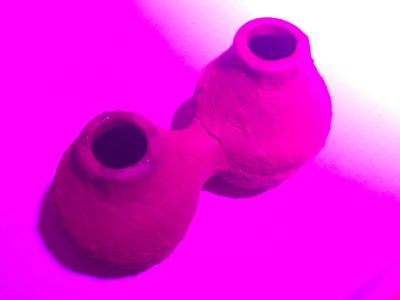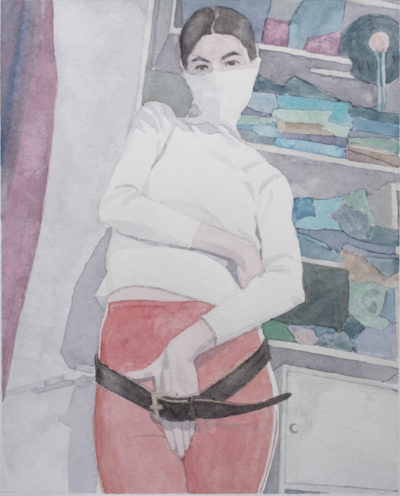To eggs and other shells

“To eggs and other shells” associatively combines artistic works around the leitmotif of a vessel or container. A sculpture, a piece of furniture, a room, an architecture, or an idea: they all engage in a relationship with the human body or are part of an action and/or a process. They also interrogate classical artistic forms or the relationship between a utility object and an art object.
With works by Joachim Bandau, Charlotte Dualé, Konstantin Grcic, HC, Aglaia Konrad, Federico Maddalozzo, Thomas Schütte and Kathrin Sonntag.
Friedemann Heckel

Friedemann Heckel has always drawn figures, but rarely included them in his public artistic practice. In his new series of watercolors, he links his interest in drawings of the human body with the visual worlds of the social-media platform Instagram. Heckel takes motifs he finds that focus on staging and revealing the subject’s own body and address the publication of private images in a playful or provocative way. The rapid change of images and the fleeting gaze while browsing the platform are interrupted while the artist paints. His goal is less to create a new picture, but rather an act of redrawing and feeling his way through the pictures, exploring an approach to longing, desire, voyeurism, and the dramatic flood of images.
Text: Leah Heckel
Marcel Frey – Lorem Ipsum

In “Lorem Ipsum”, his fourth solo show at Galerie Thomas Fischer, Marcel Frey presents a series of new paintings that he created by folding canvas and treating it with spray paint. The folds result in geometric shapes and surfaces which, interrupted by intermittent lines and curves, appear like fragments of a larger whole. While the eye attempts to reunite the individual visual elements with one another by way of imaginary turning, rotating, and re-sorting, the content of what is represented—similar to the dummy text “Lorem Ipsum”, which is always just a form, but never a support of concrete information—remains temporarily unclear.
Text: Katharina Wendler
Dirk Braeckman

Dirk Braeckman’s third exhibition at Thomas Fischer includes a selection of works that stretches across several phases of the artist’s work into the present, showing the artist’s work as a coherent, large-scale oeuvre that cannot necessarily be located in any one, specific point in time, but, on the contrary, seems remote from time. Bringing together photographs taken at various points in time is essential to Dirk Braeckman’s exhibition practice. Unlike the framework of the Venice Biennale in 2017, where he dominated the Belgian Pavilion through a strictly balanced system of hanging, for Dirk Braeckman the exhibition context of the gallery is something like an open area of experimentation.
Text: Maren Lübbke-Tidow